Emery Marc Petchauer
Emery Marc Petchauer
Theories of Change in Racial Consciousness: A Thought Exercise
This is a thought exercise I developed through the Race, Pedagogy, & Lit workshop series at Michigan State University.* The exercise tries to create dialogue and understanding among colleagues who might hold similar commitments to antiracism but take very different steps toward antiracist outcomes in courses and around campus. In a charitable environment, such colleagues are eager to understand one another. In an uncharitable environment, such colleagues may be suspicious of one another. The exercise is geared toward either environment.
Ground zero is this question:
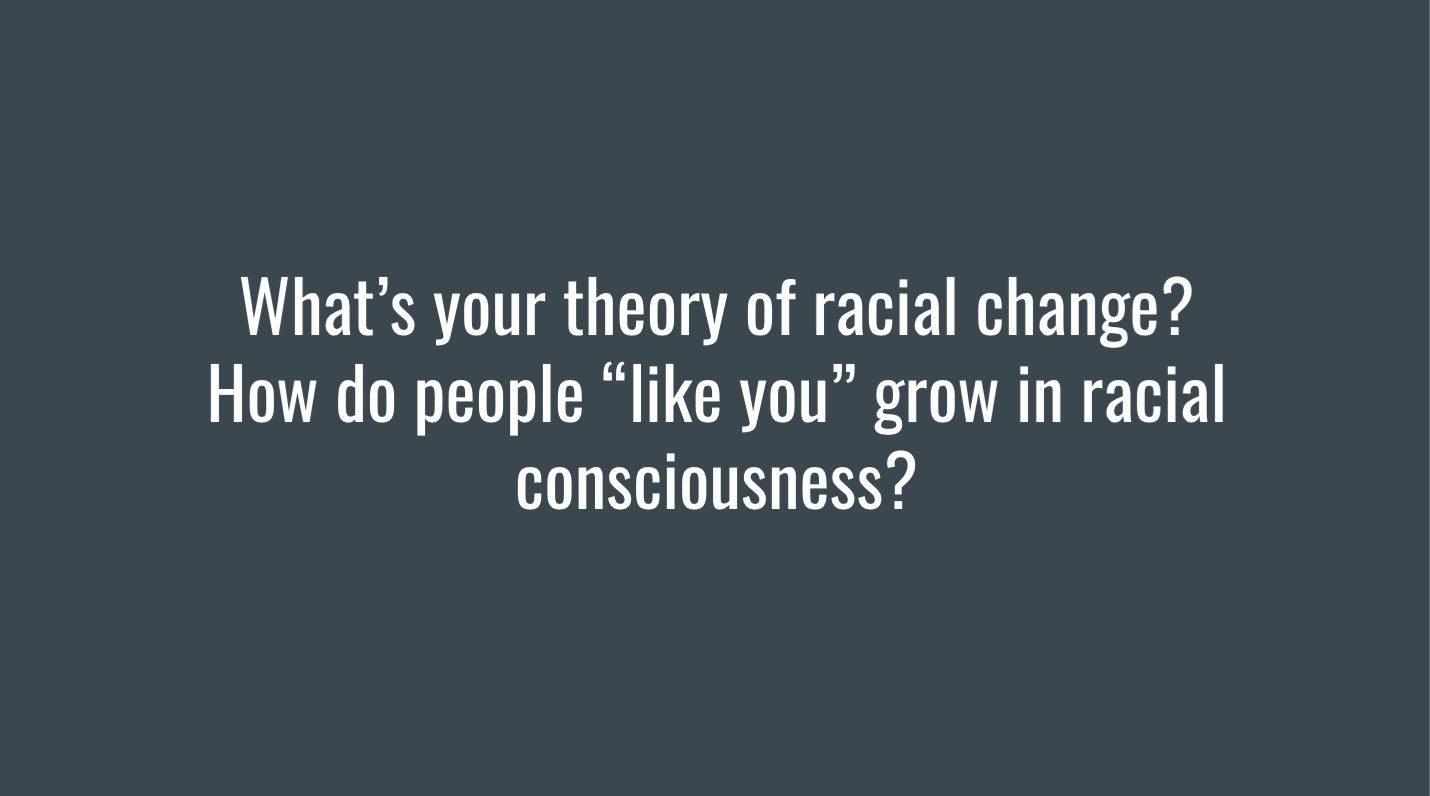
This question draws from Eve Tuck’s article “Suspending Damage,” which discusses theories of change in social science research. The social science context isn’t important. Rather, it’s important people think about the tacit theories of change they have adopted regarding how people like themselves grow in racial consciousness.
The framing of this question toward people “like you” is useful. First, it allows people to take up the question in a range of ways. Second, it allows facilitators to prompt in certain directions, like asking white folks to think about how other white folks grow in racial consciousness.
We then link this question with two others relevant to the campus context. These three questions and the possible answers make up the thought matrix of the exercise. How you answer these questions reveals key components about the overall theory of change that guides your actions.
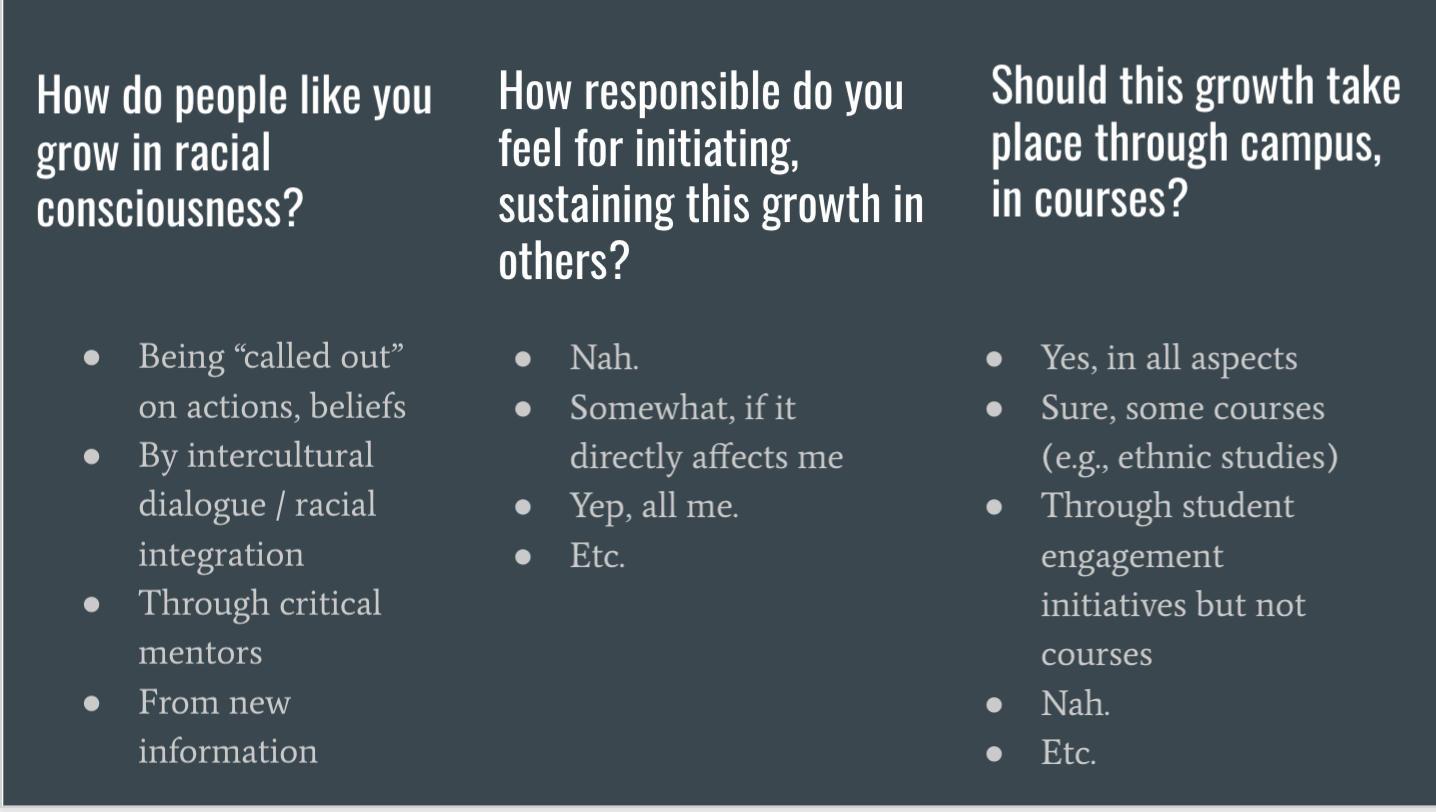
We then think about the kinds of actions that would follow from different configurations of answers. You can see one configuration in the series of green answers below. This person would likely be very vocal, all the time, and everywhere. Do you know anyone like this? Is this you? This person would also likely design courses and campus programing for explicit antiracist outcomes. The point here isn’t to evaluate this theory of change but to understand the actions that would follow from this particular configuration of answers.
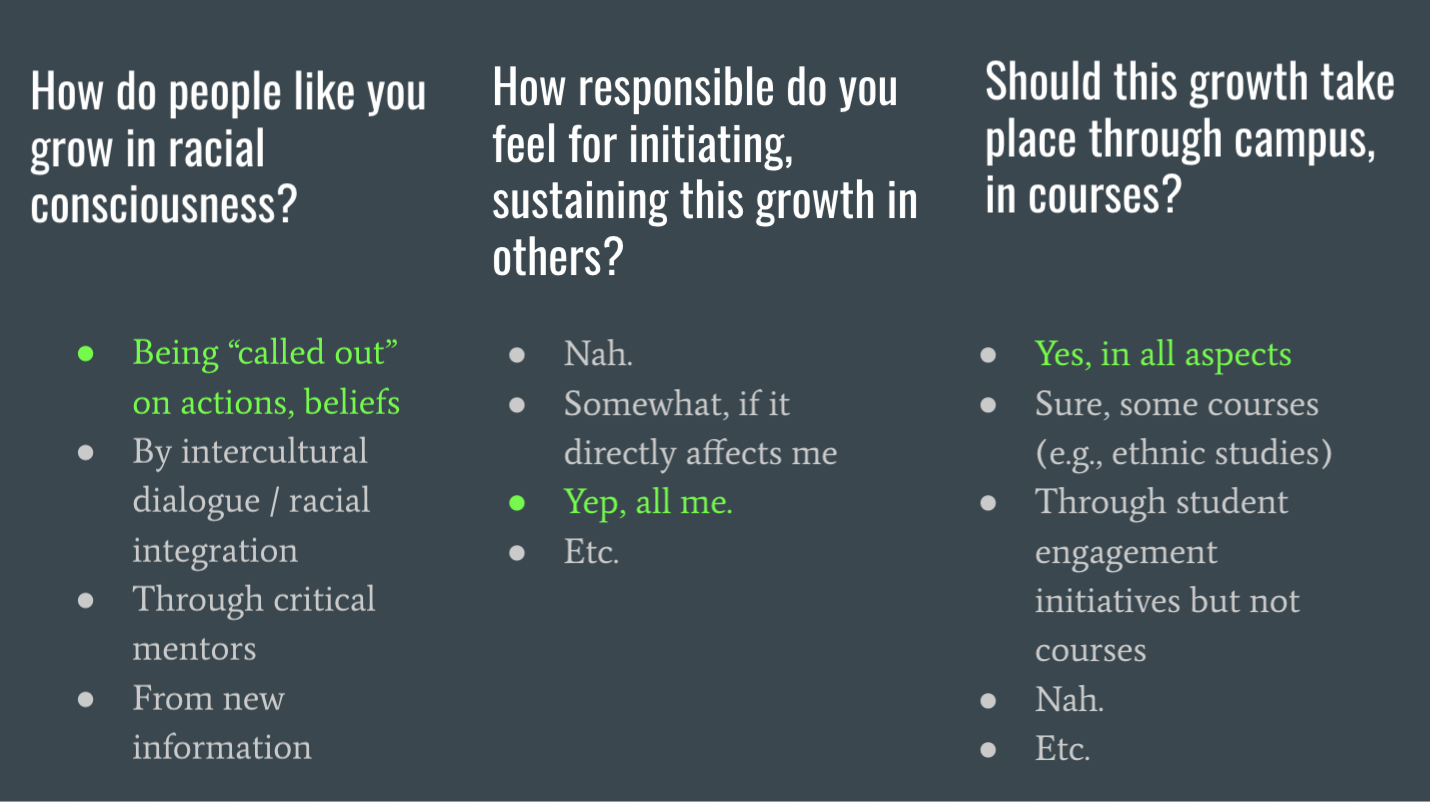
But then if you were to change just one answer, the ensuing actions would also change. In this case below, the red answer would shape the curricular and campus programming decision faculty and staff make. This person would not wrap all courses and programming around antiracist outcomes, even though the answers in the first two columns have not changed.
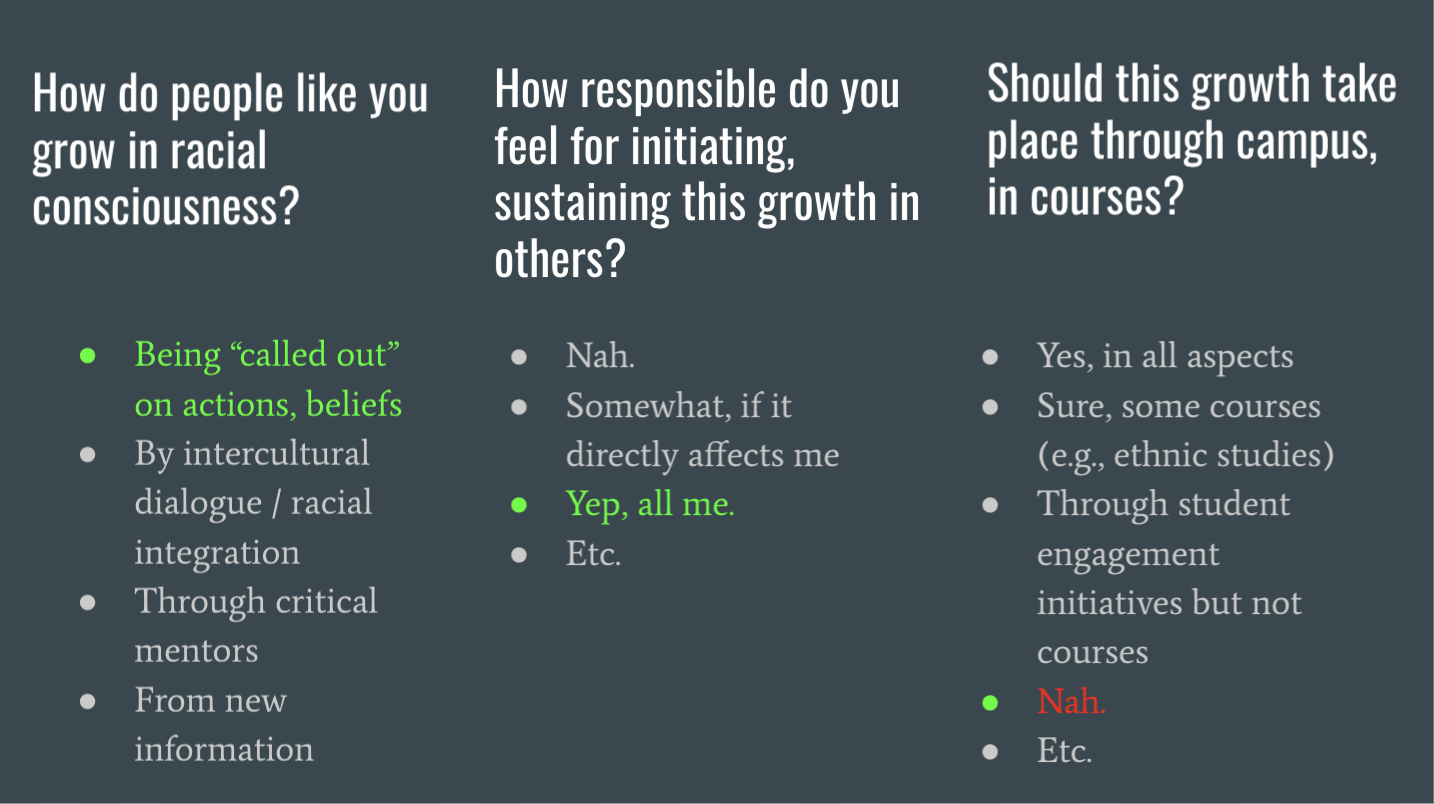
And there are other options too. In the configuration below, this person feels less responsible for initiating growth in others. This might mean they are less vocal about issues that do not directly impact them.
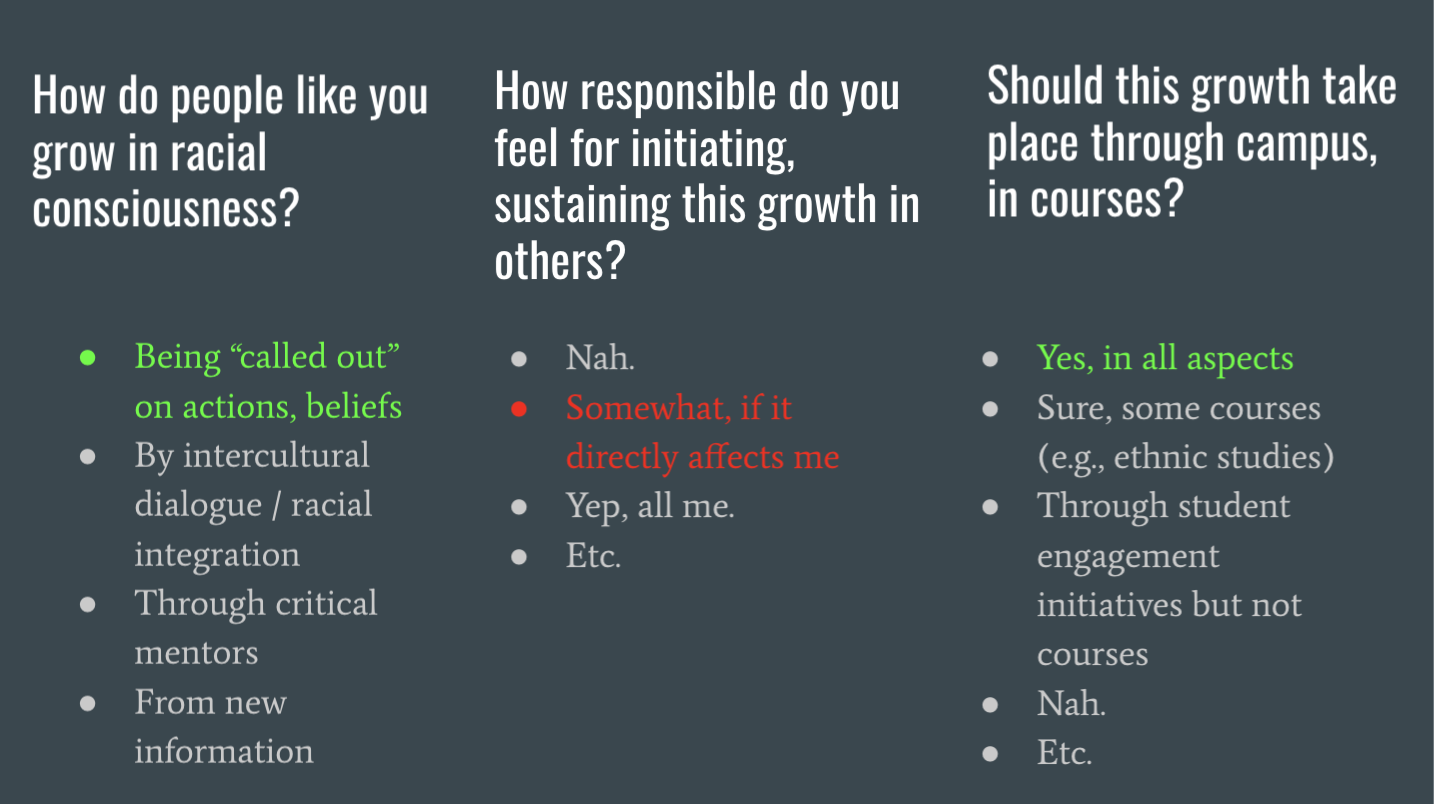
And so on. Once again, the point in this exercise is not to evaluate theories of change. Some of them might be right. Some of them might be wrong. And there are always contradictions among theories of change because they operate across many scales and temporalities (another point from Tuck). Similarly, the point is not to reach consensus about which set of answers is right (though that may be an important step in a different process). The point is to understand how different answers to key question will result in different actions. Colleagues may be very similar to one another with respect to how they answer these questions, but the actions that result may be very different. Or colleagues may be very different from one another with respect to how they answer these questions, and that is why their actions are different.
I imagine there are many ways to remix this exercise. Different sets of questions and answers could populate this matrix and shift the purpose of the activity. The phrase “racial consciousness” early on could be substituted with something else as well.
*Thanks to my collaborators Briona S. Jones and Sen Kim for co-facilitating this Race, Pedagogy, and Lit series.